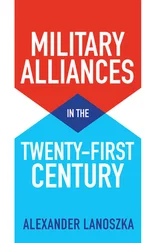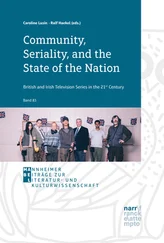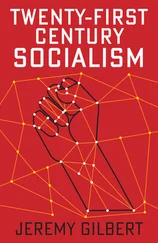This is not a counsel of despair. It is, instead, an argument to offer a helping hand. A neighbour full of desperate young men without hope or prospects, led by a malicious and self-aggrandizing military, is a permanent threat to twenty-first-century India. If India can help Pakistan transcend these circumstances and help it develop a stake in mutually beneficial progress, it will be helping itself as well. In such an approach lies the slender hope of persuading Pakistan that India’s success can benefit it too, that, rather than trying to undercut India and thwarting its growth, Pakistan should look to the advantages that might accrue to it as a neighbour and partner of an upwardly mobile and increasingly prosperous India.
Such an India can build on the generosity it has often shown — as witness the unilateral MFN status it gave Pakistan — by extending itself to its neighbour, offering a market for Pakistani traders and industrialists, a creative umbrella to its artists and singers, and a home away from home for those seeking a refuge from the realities of Pakistani life. Many Pakistanis now realize that perpetual conflict with India is hampering Pakistan’s own aspirations for economic growth and development. Multiplying our channels of contact — with ‘back-channel diplomacy’ conducted by ‘special envoys’ of the two leaderships (a formula used effectively by Musharraf and Manmohan Singh), direct contact between the two militaries (of which there is very little) and extensive people-to-people contact — is indispensable to the peace effort. NGOs and civil society — particularly those that channel the energy of young people, who are impatient with decades of hostility — can also play a useful role in developing relations that go beyond the prescriptions and the proscriptions of governments.
Sadly, India has reacted to 26/11 and other Pakistani provocations by tightening its visa restrictions and restraining other possibilities of cultural and social contact. This may be an area in which risks are worth taking, since the advantages of openly issuing visas and enhancing opportunities for Pakistanis in India outweigh the dangers; after all, the terrorists of 26/11 did not apply for Indian visas before coming onshore with their deadly baggage. I am strongly in favour of a liberal visa regime, which would require India to remove its current restrictions on which points of entry and exit the Pakistani visa holder can use, the number of places that may be visited and the onerous police reporting requirements. To begin with, a list can be drawn up of prominent Pakistanis in such fields as business, entertainment and media, who would be eligible for more rapid processing and for multiple-entry visas. It will be argued that Pakistan will not reciprocate such one-sided generosity, but India should not care. Insisting on parity with Pakistan is to bring ourselves down to their level. Let us show a magnanimity and generosity of spirit that in itself stands an outside chance of persuading Pakistanis to rethink their attitude to us.
More difficult politically but well worth doing might be to make concessions on issues where vital national interests are not involved. Not all the issues that divide India and Pakistan can be resolved across a table, but specific problems like trade, the military standoff on the Siachen glacier, the territorial boundary between the two nations at Sir Creek or contention over water flows through the Wullar Barrage and many other points of detail are certainly amenable to resolution through dialogue. It seems silly that public passions in Pakistan are being stirred over false claims that India is diverting Indus river water; much of this could be dispelled by candid and open talk to the Pakistani public by Indian officials. The new-found Pakistani willingness to reciprocate India’s offer of MFN status in trade relations should be seized upon by India taking concrete steps to reduce the non-tariff barriers relating to security inspections, lab checks and clearances that have limited the extent of Pakistani exports to our country. India’s financial services industry and its software professionals could also offer themselves to Pakistani clients, giving themselves a next-door market and providing services that Pakistan could use to develop its own economy. The education sector offers obvious opportunities, especially in these days of videoconferencing, which could allow students from one country to listen to lectures delivered in another. The prospects for cooperation in such areas as agriculture or the development of wind energy are bright. These are all ‘easy wins’ waiting to be pursued at the first opportunity.
The big questions — the Kashmir dispute and Pakistan’s use of terrorism as an instrument of policy — will require a great deal more groundwork and constructive, step-by-step action for progress to be made. Afghanistan is an area of contention that, given a new climate of peace, could become an area for cooperation rather than a site of proxy conflict. By showing accommodativeness, sensitivity, foresight and pragmatic generosity in all the ways suggested above, India might be able to turn the bilateral narrative away from the logic of intractable hostility in which both countries have been mired for too long. Once that happens, it may even be possible to look beyond each other to economic cooperation with third countries: the Iran — Pakistan — India pipeline, for instance, or overland access for Indian goods through Pakistan and Afghanistan to Central Asia, neither of which looks feasible as long as Pakistan remains hostile territory.
The elephant in the room remains the Pakistani Army. Until the military men are convinced that peace with India is in their self-interest, they will remain the biggest obstacles to it. One hope may lie in the extensive reach of the Pakistani military apparatus and its multiple business and commercial interests. Perhaps India could encourage its firms to trade with enterprises owned by the Pakistani Army, in the hope of giving the military establishment a direct stake in peace. More military-to-military exchanges, even starting with such basic ideas as sporting contests between the two armies, would also help. The idea of joint exercises between the two militaries seems preposterous today, but it is entirely feasible in a UN peacekeeping context: just a few years ago, Indian aircraft strafed Congolese rebel positions in support of besieged Pakistani ground troops as part of a UN peacekeeping operation, MONUC.
In my UN days I personally witnessed the extraordinary degree of comradeship between Indian and Pakistani officers serving in the Peacekeeping Department headquarters in New York; perhaps being among foreigners served as a constant reminder of how much more they had in common with each other, so that they were frequently lunching together, visiting each other’s homes and seeing the local sights together. Such contacts can and should be built upon to develop the right atmospherics for peaceful relations, which unavoidably require engagement with the Pakistani military. Indians are, understandably, among the strongest supporters of Pakistani democracy, at least in theory, but we have to live with the realities next door, and that requires us to see the Pakistani military not just as the problem, but as a vital element of the solution.
As good neighbours, Indians should be saddened by the continuing incidents of terrorist violence in Pakistan; we must wish Islamabad well in its efforts to repel militancy and fanaticism within its own borders. We would welcome indications that Islamabad shares our view that the forces of terrorism emanating from Pakistani soil are indivisible and that those plotting attacks on India from Pakistani territory are as much the enemies of Pakistan as they are of India. From such a diagnosis, the only possible prescription is that of cooperation, to build peace and security together. We hope that those who rule that country will make that diagnosis, and share the same prescription.
Читать дальше












